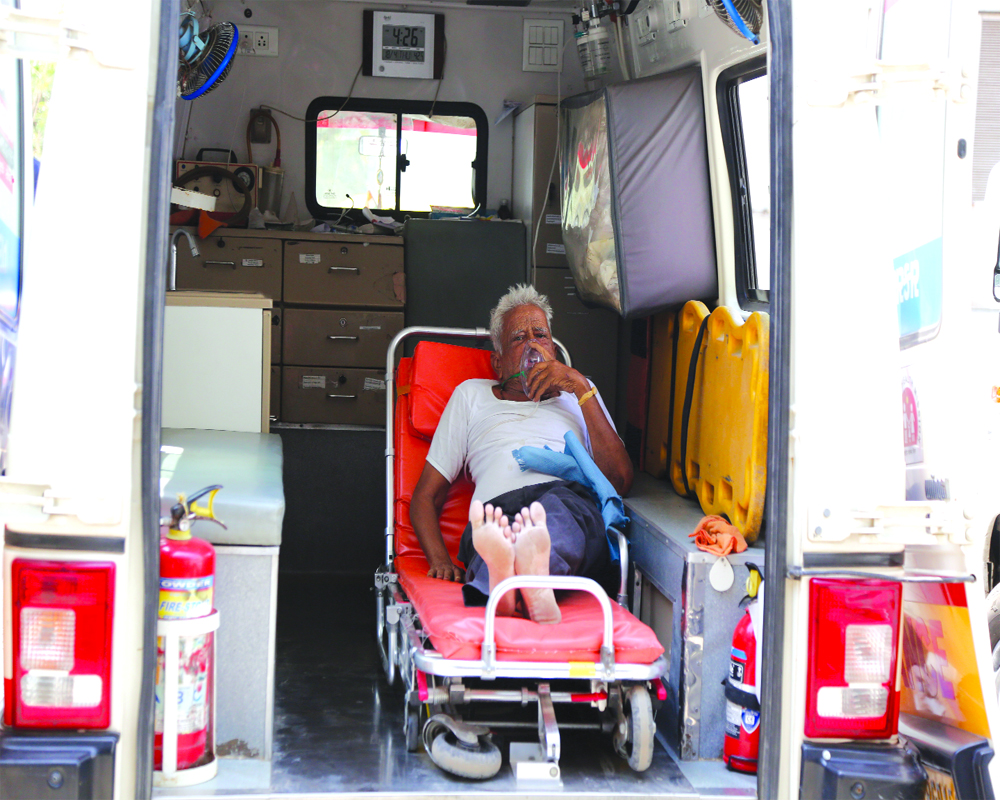The coronavirus pandemic has not only grabbed the headlines but has also thrown the global health emergency care in disarray. The ubiquitous virus has not spared anyone, not even the most prosperous economies of the world.
Studies have shown that people living with comorbidity (i.e., concomitant morbidity) are under high risk of falling critically ill or succumbing to coronavirus. They are dying from the in-hospital complications and a high incidence of mortality. The comorbidity is mostly of non-communicable diseases (NCDs), such as diabetes, hypertension, obesity, cerebrovascular accident, malignancy, asthma, cardiovascular disease, chronic kidney and obstructive pulmonary diseases, etc.
Moreover, persons with diabetes have been in the limelight since the inception of the pandemic as the epidemiological data have revealed their high risk of several clinical adversaries (The Lancet, 2020). As per the statistics, 71 per cent of deaths are owing to NCDs globally, 41 million people every year, of which 15 million are under the age of 70 years. Moreover 8.5 million cases are from low and middle income countries.
The Lancet Diabetes & Endocrinology published its findings based on 61 million individuals in England on their absolute and relative risk of mortality due to Covid-19 and the type of diabetes. It finds that the odd ratio of in-hospital deaths is 3.51, and 2.03 for persons with type-1 and type-2 diabetes, respectively. Information from 1561 Covid-19 patients from two hospitals in Wuhan showed that those with diabetes (9.8%) were more likely to need admission to the intensive care unit or to die, and similar cases are also noted from other parts of the world.
However, despite having a high percentage of diabetes, the reported cases of mortality in India, Bangladesh and Pakistan are comparatively low so far. The climatic and geographical factors have some bearing on this low fatality rate in this region. (Apicella et. al., The Lancet, July 17, 2020).
Using the Longitudinal Aging Study in India (LASI, 2017-19) database of the Harvard, IIPS and the University of Southern California on disease and health condition of the population aged 45 years and above, we estimated that 18.28 per cent have comorbidity. About 60 per cent of the patients with diabetes have high blood pressure, while 17.32 per cent of patients with high cholesterol levels are suffering from chronic heart diseases. This co-occurrence of more than one disorder in the same individual is a matter of utmost concern during the raging pandemic. Our results also demonstrated that 75 per cent of the individuals suffering from comorbidity are hardly ever or never engaged in vigorous physical activities. Out of total patients suffering from comorbidity, about one-quarter indulge in substance use. Cases among females are more than males and it increases with the rise in income from the second to fifth income quintile.
The Government’s initiative to prioritise the people with comorbidity in this age group on the vaccination list is the need of the hour and has been followed from March 1 to curb the second wave of covid.
However, the public spending on NCDs is less than 0.5 per cent of GDP in India. The findings of the National Family Health Survey (NFHS) of 2015-16 state that obesity has given a steep rise to hypertension among people with BMI more than 30. While 11 per cent of the eligible women (i.e, age 15-49) have hypertension, including 7 per cent having stage-1 hypertension, and stage-2 and stage-3 hypertension at 1 per cent each. On blood pressure parameter, it finds 61 per cent women as compared to 43 per cent men, but only 1 per cent of them take anti-hypertensive medicines.
The National Programme for Prevention and Control of Cancer, Diabetes, Cardiovascular Disease and Stroke (NPCDCS) has been executed by the Ministry of Health and Family Welfare to raise awareness regarding risk factors and establishment of NCD clinics, cardio care centre and screening at primary health-care level. The National Action Plan has also been conceived along the global monitoring framework to reduce the premature deaths from NCDs to 25 per cent by 2025. However, the Covid-19 pandemic has militated against Government’s efforts of integrating NPCDCS with National Health Mission and AYUSH to promote a healthy lifestyle and strengthening infrastructure to detect NCDs at an early stage.
The focus of the healthcare system in India at present lies on four important directions --- intervention in maternal and child health, preventive and affordable healthcare, medical infrastructure, and communicable and non-communicable diseases. Under the aegis of Ayushman Bharat Scheme, the Health and Wellness Centres, Primary Healthcare Centres, Community Health Centres are providing free diagnostic services for the NCDs.
Simply designing and implementing policies are not sufficient to weaken the bond between Covid-19 and comorbidity. There is a need to eliminate practical and psychological barriers to healthy behaviour, which is possible by the adoption of a behavioural economics approach. Integration of these idiosyncratic approaches into policymaking will illustrate its ability to improve both the effectiveness and efficiency of policies through well-designed interventions in curtailing the comorbidity, especially during the second of Covid-19.
(Pratap C Mohanty teaches Economics at IIT Roorkee. He specialises in Health Economics. Pragya Taneja is a PhD Fellow, Department of Humanities and Social Sciences, IIT Roorkee)

























